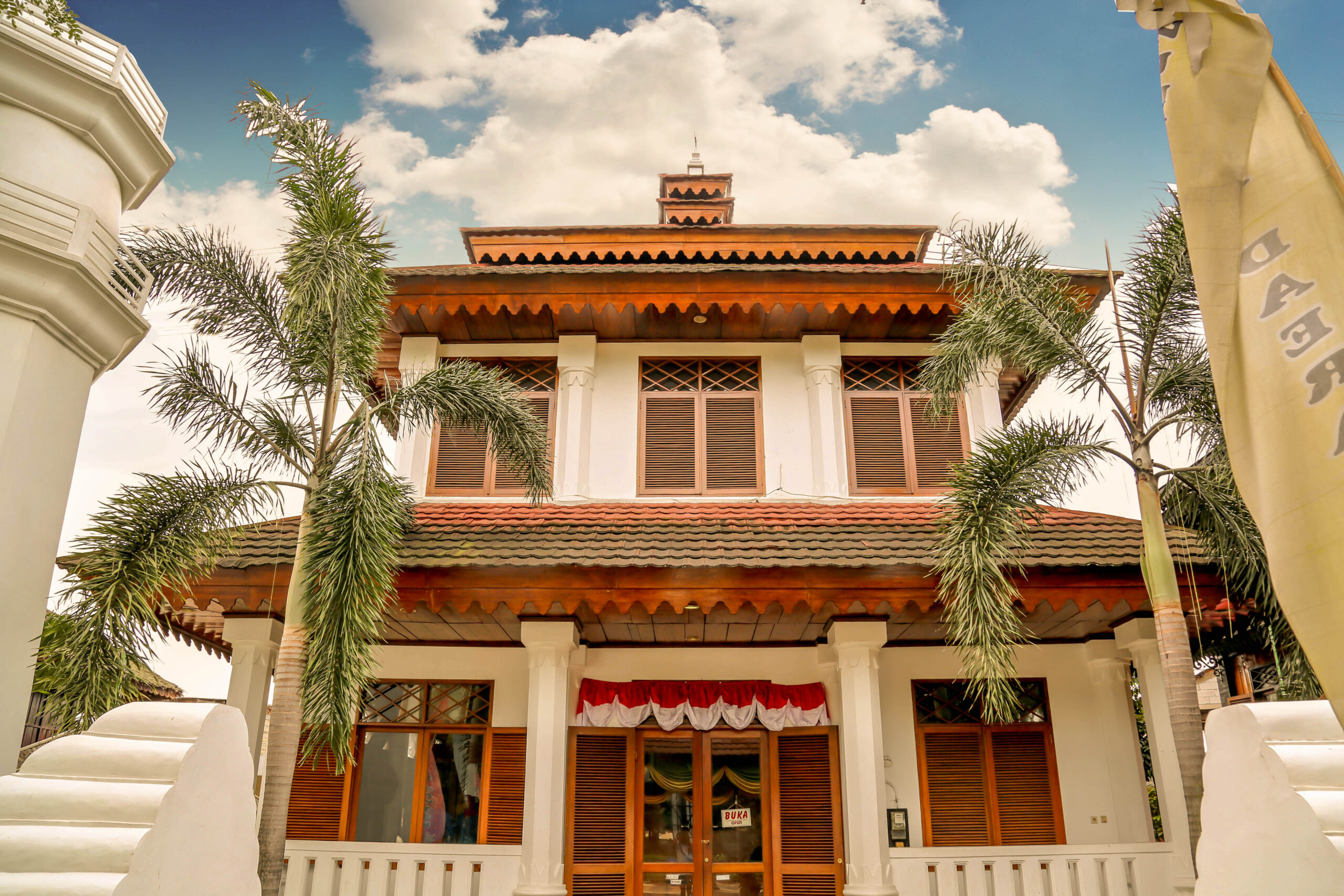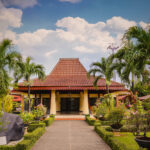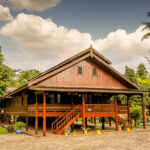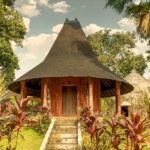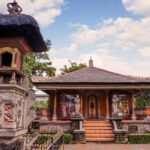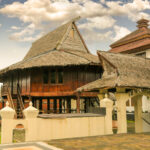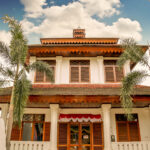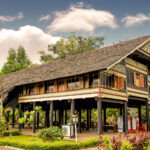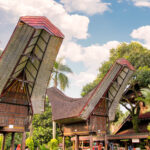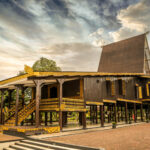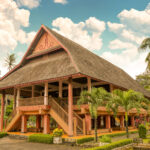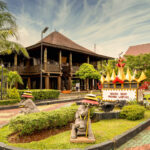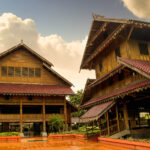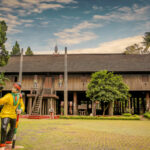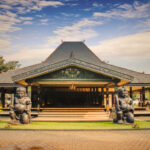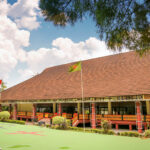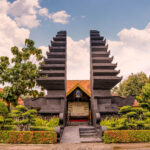Wilujeng sumping!
In ancient times, Banten was an Islamic kingdom that rooted itself in the captivating realms of maritime exploration and trade. This region is said to have served as a trade hub in Southeast Asia, evolving into a center for the spread of Islam under the leadership of Sultan Malik Hasanudin and Sultan Ageng Tirtayasa.
Banten weaves a cultural tapestry from various ethnic groups that dance in harmony, encompassing the Banten, Sundanese, Javanese, Betawi, Chinese, and the secluded Baduy communities. The commonly used languages are Sundanese-Banten and Javanese-Banten.
One of Banten’s renowned arts is Rampak Bedug, which showcases the players’ agility of striking the bedug in a melodic dance form. Additionally, there’s the magical traditional martial art of Debus, infused with supernatural powers, blending musical and dance elements. Performances feature displays of the body’s immunity against various sharp and hot objects.
The Banten Pavilion at TMII presents a main building with the distinctive architecture of the old Masjid Agung Banten, built by Sultan Maulana Hasanudin in 1566. The ground floor serves as a stage for exhibitions, while the upper floor functions as office space. The building is a square shape with a five-tiered roof. At the front, on the right, there’s a replica tower about 10 meters high that forms a lighthouse.
Discover traditional costumes, traditional musical instruments, household items, traditional weapons, and mesmerizing handicrafts here. Don’t miss the beautiful patterns of Banten’s Batik, the debus musical instruments, the rudat dance, the dramatic terbang gede performance, traditional akang and eteh attire, as well as the everyday clothing of the Baduy community.
Craftsmanship on display includes beautiful agate stone crafts, enchanting woven wood, intricately woven traditional fabric, and captivating bamboo weaving. Don’t forget to explore the arts made from clay, such as pottery and ceramics, that adorn the space.
DID YOU KNOW?
The mystery of the origin of the Debus tradition still lingers in the fog of history. Allegedly, the word Debus holds the meaning of penetrating, considering the unique performance where the participants attempt to penetrate the body with sharp metal objects or even be struck. Interestingly, this art has become an inherited legacy thriving in the rural villages of Banten.

